Pentax UD 9x21 Handleiding
Pentax
Verrekijker
UD 9x21
Bekijk gratis de handleiding van Pentax UD 9x21 (2 pagina’s), behorend tot de categorie Verrekijker. Deze gids werd als nuttig beoordeeld door 63 mensen en kreeg gemiddeld 4.3 sterren uit 32 reviews. Heb je een vraag over Pentax UD 9x21 of wil je andere gebruikers van dit product iets vragen? Stel een vraag
Pagina 1/2

How to Use
1. Eyepiece Rings
• For proper view of the entire image area it may be necessary to adjust the
eyepieces (Fig. 1). They can be moved out by turning the eyepiece ring to
the left (counter clockwise) and in by turning the eyepiece ring to the right
(clockwise).
• Rotate the eyepiece rings in if you wear glasses while using these binoculars.
• Do not rotate the eyepiece rings with excessive force.
2. Adjusting the Eyepiece Width
• While looking at a distant object through both the right and left eyepiece
lenses, adjust the barrels so that you can view the object comfortably in one
image circle (Fig. 2).
3. Adjusting Diopter
• While looking through the left eyepiece lens with the left eye only, turn the
central focusing wheel slowly to focus on a distant object most sharply (Fig.
3-1).
• While looking through the right eyepiece lens with the right eye, turn the
diopter adjusting ring until the same object comes into sharp focus (Fig. 3-2).
Be careful not to rotate the central focusing wheel.
• To observe the subject at different distances, focus by turning the central
focusing wheel to the right or left.
4. Attaching Strap
• Attach the strap as shown.
Pull it lightly to make sure it is securely attached.
5. Mounting Binoculars on Tripod
• To mount the binoculars on a tripod, remove the tripod socket cover by turning
it counterclockwise, screw the optional Pentax Tripod Adapter TP-3 into the
tripod socket and attach the binoculars on to the tripod.
English
English
Specifi cations
Models
Features UD9x21 UD10x21
Type Roof prism, Center focusing
Magnifi cation 9× 10×
Effective diameter of
objective lens 21 mm
Real fi eld of view 6.0° 5.4°
Field of view at 1000m
Field of view at 1000yards
105 m
344 ft.
94 m
308 ft.
Exit pupil aperture 2.3 mm 2.1 mm
Relative brightness 5.3 4.4
Eye relief 9.9 mm 8.5 mm
Focusing range Approx. 3 m to infi nity
Approx. 9.9 ft. to infi nity
Eye width (ocular distance)
adjustable range
Approx. 58 mm to 72 mm
(Approx. 2.3 in. to 2.8 in.)
Height × width (mm)
(in.)
Approx. 87 × 108 mm
Approx. 3.4 × 4.3 in.
Thickness Approx. 38 mm (1.5 in.)
Weight Approx. 195 g (6.9 oz.)
Accessories Eyepiece lens cap, Case, Strap
1
2
3-1
3-2
4
❷
❶
OWNER’S MANUAL
WARNING
Never attempt to look into the sun with binoculars.
①
②
③
④
⑤
⑥
⑧
⑨
⑦
⑩
English
Names of Parts
①Eyepiece Lenses
②Eyepiece Ring
③Diopter Adjusting Ring
④Strap Lug
⑤Central Focusing Wheel
⑥Right Barrel
⑦Left Barrel
⑧Center Axis
⑨Objective Lenses
⑩Tripod Socket Cover
RICOH IMAGING COMPANY, LTD.
1-3-6, Nakamagome, Ohta-ku, Tokyo 143-8555, JAPAN
(http://www.ricoh-imaging.co.jp)
☆ SPECIFICATIONS ARE SUBJECT TO CHANGE AT ANY TIME WITHOUT NOTIFICATION OR ANY
OBLIGATION ON THE PART OF THE MANUFACTURER.
☆ DIE TECHNISCHEN DATEN DES PRODUKTS KÖNNEN JEDERZEIT OHNE WEITEREVER PFLICH-
UNIKAĆ SZBKICH ZMIAN
TEMPERATURY
NIE DOPUSZCZAĆ
DO UPADKU I UDERZENIA
NIE PATRZEĆ BEZPOŚREDNIO
NA SŁOŃCE
DO NOT LOOK AT THE SUN
NIE NARAŻAĆ
NA WYSOKIE TEMPERATURY
DO NOT SUBJECT
TO STRONG IMPACT
DO NOT EXPOSE TO
HIGH TEMPERATURE
DO NOT SUBJECT
TO RAPID CHANGES IN TEMPERATURE
WARNING
1. To avoid serious eye damage, NEVER look at the sun using the binoculars.
Serious damage to the retina, or total loss of eyesight may occur.
2. Do not leave the binoculars in locations subject to direct sunlight. Sun
rays passing through the binoculars can be intensifi ed, and should they
focus on fl ammable materials, fi re may occur.
Safety Precautions
1. Do not use the binoculars while walking as depth perception and peripheral
vision are dramatically altered. This can result in injury.
2. Caution should be taken when adjusting the binocular barrels, especially by
children, to avoid fi ngers being pinched.
3. Using the binoculars may cause infl ammation of the skin around the eye where
the eyepiece ring comes in contact with the skin. Consult a physician if any
symptoms are noticed.
4. Do not swing the binoculars by the strap, as there is a danger of injury.
5. Keep the vinyl bag in which the binoculars are packed for delivery, and all
other vinyl bags, out of the reach of children and infants, as there is a risk of
suffocation.
Handling Precautions
1. Do not apply excessive force when adjusting the central focusing wheel, diopter
adjusting ring, eyepiece rings, eyepiece width.
2. Do not drop the binoculars or subject them to strong vibration, impact or
pressure.
3. Never expose the binoculars to high temperature (over 60 degrees centigrade
or 140 degrees Fahrenheit). Avoid leaving the binoculars for an extended period
of time in a hot humid place such as in a car parked in the sun or near a heater,
as this could cause the binoculars to become deformed.
4. Care should be taken when the binoculars are taken to the places with widely
varying temperatures difference as condensation or, in extreme cases, icelets
may form that could cause rust or other damage. In such circumstances the
binoculars should be covered by the bag or soft case so that the temperature
change will be as gradual as possible. After the temperatures have stabilized,
the binoculars may be uncovered and used again.
5. Reasonable care should be taken to prevent exposure to dirt, mud, sand,
moisture, toxic gas, or any other substance. These substances may cause
damage or render the binoculars inoperable.
6. These binoculars are waterproof. However, if they are wet after use, wipe them
with a dry cloth. Do not use thinner, alcohol or benzine for cleaning. If the lenses
are dirty, wipe away any residual dirt with a clean, soft, dry cloth using lens
cleaner.
7. Binoculars should be stored in a well-ventilated place to prevent fungus
growth. Never store them in a closet with mothballs or in an environment where
chemicals are handled.
English
INSTRUKCJA UŻYTKOWANIA
①
②
③
④
⑤
⑥
⑧
⑨
⑦
⑩
POLSKI NAZWY CZĘŚCI
①Soczewki okularu
②Pierścień okularu
③Pierścień regulacji dioptrii
④Uchwyt paska
⑤Centralne pokrętło do ustawiania ostrości
⑥Prawy tubus
⑦Lewy tubus
⑧Oś środkowa
⑨Soczewki obiektywu
⑩Osłona gniazda statywu
2675=(ĩ(1,(
1. $E\XQLNQąüSRZDĪQHJRXV]NRG]HQLDRF]X1,*'<QLHSDWU]SU]H]ORUQHWNĊ
QDVáRĔFH0RĪHZ\VWąSLüSRZDĪQHXV]NRG]HQLHVLDWNyZNLOXEFDáNRZLWD
XWUDWDZ]URNX
2. 1LH]RVWDZLDMORUQHWNLZPLHMVFDFKQDUDĪRQ\FKQDEH]SRĞUHGQLHG]LDáDQLH
SURPLHQLVáRQHF]Q\FK3URPLHQLHVáRQHF]QHSU]HFKRG]ąFHSU]H]ORUQHWNĊ
PRJą E\ü ]LQWHQV\ILNRZDQH D MHĞOL VNXSLą VLĊ QD PDWHULDáDFK
áDWZRSDOQ\FKPRĪHGRMĞüGRSRĪDUX
ĝURGNLRVWURĪQRĞFL
1. 1LHXĪ\ZDMORUQHWNLSRGF]DVFKRG]HQLDSRQLHZDĪSRVWU]HJDQLHJáĊELLZLG]HQLH
SHU\IHU\MQHXOHJDMąGUDPDW\F]Q\P]PLDQRP0RĪHWRVSRZRGRZDüREUDĪHQLD
2. 1DOHĪ\]DFKRZDüRVWURĪQRĞüSRGF]DVUHJXODFMLWXEXVyZORUQHWNL]ZáDV]F]D
SU]H]G]LHFLDE\XQLNQąüSU]\WU]DĞQLĊFLDSDOFyZ
3. .RU]\VWDQLH]ORUQHWNLPRĪHVSRZRGRZDü]DSDOHQLHVNyU\ZRNyáRNDZPLHMVFX
NRQWDNWXSLHUĞFLHQLDRNXODUX ]HVNyUą: SU]\SDGNX]DXZDĪHQLD MDNLFKNROZLHN
REMDZyZVNRQVXOWXMVLĊ]OHNDU]HP
4. 1LHPDFKDMORUQHWNą]DSDVHNSRQLHZDĪLVWQLHMHQLHEH]SLHF]HĔVWZR]UDQLHQLD
5. 3U]HFKRZXMZLQ\ORZąWRUEĊZNWyUą]DSDNRZDQDMHVWORUQHWNDQDF]DVGRVWDZ\
RUD] ZV]\VWNLH LQQH ZLQ\ORZH WRUE\ SR]D ]DVLĊJLHP G]LHFL L QLHPRZOąW
SRQLHZDĪLVWQLHMHU\]\NRXGXV]HQLD
ĝURGNLRVWURĪQRĞFL
1. 1LHQDOHĪ\VWRVRZDüQDGPLHUQHMVLá\SRGF]DVUHJXODFMLFHQWUDOQHMĞUXE\GR
XVWDZLDQLDRVWURĞFLSLHUĞFLHQLDUHJXODFMLGLRSWULLSLHUĞFLHQLRNXODUXV]HURNRĞFL
RNXODUX
2. 1LHXSXV]F]DMORUQHWNLDQLQLHQDUDĪDMMHMQDVLOQHZLEUDFMHXGHU]HQLDOXEQDFLVN
3. 1LJG\ QLH Z\VWDZLDM ORUQHWNL QD G]LDáDQLH Z\VRNLHM WHPSHUDWXU\ SRZ\ĪHM
VWRSQL&HOVMXV]DOXEVWRSQL)DKUHQKHLWD8QLNDMSR]RVWDZLDQLDORUQHWNLQD
GáXĪV]\F]DVZJRUąF\PZLOJRWQ\PPLHMVFXWDNLPMDNVDPRFKyG]DSDUNRZDQ\
QDVáRĔFXOXEZSREOLĪXJU]HMQLNDSRQLHZDĪPRĪHWRVSRZRGRZDüGHIRUPDFMĊ
ORUQHWNL
4. 1DOHĪ\]DFKRZDüRVWURĪQRĞüJG\ORUQHWNDMHVWSU]HQRV]RQDZPLHMVFDREDUG]R
]UyĪQLFRZDQ\FKWHPSHUDWXUDFKUyĪQLF\ZSRVWDFLNRQGHQVDFMLOXEZVNUDMQ\FK
SU]\SDGNDFK PRJą WZRU]\ü VLĊ ORG\ NWyUH PRJą SRZRGRZDü UG]HZLHQLH OXE
LQQH XV]NRG]HQLD : WDNLHM V\WXDFML ORUQHWNĊ QDOHĪ\ VFKRZDü GR WRUE\ OXE
PLĊNNLHJR IXWHUDáX DE\ ]PLDQD WHPSHUDWXU\ E\áD MDN QDMEDUG]LHM VWRSQLRZD
3RXVWDELOL]RZDQLXVLĊWHPSHUDWXUORUQHWNĊPRĪQDRGVáRQLüLSRQRZQLHXĪ\ü
5. 1DOHĪ\]DFKRZDüUR]VąGQąRVWURĪQRĞüDE\]DSRELHFQDUDĪHQLXQDEUXGEáRWR
SLDVHN ZLOJRü WRNV\F]Q\ JD] OXE MDNąNROZLHN LQQą VXEVWDQFMĊ 6XEVWDQFMH WH
PRJąVSRZRGRZDüXV]NRG]HQLHOXEXQLHPRĪOLZLüG]LDáDQLHORUQHWNL
6. 7HORUQHWNLVąZRGRRGSRUQH-HĞOLMHGQDNVąPRNUHSRXĪ\FLXZ\WU]\MMHVXFKą
V]PDWNą 'R F]\V]F]HQLD QLH XĪ\ZDM UR]FLHĔF]DOQLND DONRKROX DQL EHQ]\Q\
-HĞOLVRF]HZNLVąEUXGQH]HWU]\MUHV]WNLEUXGXF]\VWąPLĊNNąVXFKąV]PDWNą
LĞURGNLHPGRF]\V]F]HQLDVRF]HZHN
7. /RUQHWNLQDOHĪ\SU]HFKRZ\ZDüZGREU]HZHQW\ORZDQ\PPLHMVFXDE\]DSRELHF
UR]ZRMRZLJU]\EyZ 1LJG\QLH SU]HFKRZXM LFKZ V]DILH] NXONDPLQD PROHOXE
ZĞURGRZLVNXZNWyU\PSUDFXMHVLĊ]FKHPLNDOLDPL
POLSKI
Jak używać
1. Pierścienie okularu
•Dla prawidłowego widzenia całego obszaru obrazu może być konieczne
wyregulowanie okularów (rys. 1). Można je wysunąć, obracając pierścień okularu w
lewo (przeciwnie do ruchu wskazówek zegara), a do środka, obracając pierścień
okularu w prawo (zgodnie z ruchem wskazówek zegara).
• Obróć pierścienie okularu, jeśli nosisz okulary podczas korzystania z tej lornetki.
• Nie obracaj pierścieni okularu z nadmierną siłą.
2. Regulacja szerokości
•Patrząc na odległy obiekt zarówno przez prawą, jak i lewą soczewkę okularu,
wyreguluj tubusy tak, aby móc wygodnie oglądać obiekt w jednym okręgu obrazu
(rys. 2).
3. Regulacja dioptrii
•Patrząc przez lewą soczewkę okularu tylko lewym okiem, powoli obracaj centralnym
pokrętłem ostrości, aby ustawić ostrość na odległym obiekcie (rys. 3-1).
•Patrząc prawym okiem przez prawą soczewkę okularu, obracaj pierścień regulacji
dioptrii, aż ten obiekt stanie się ostry (rys. 3-2). Uważaj, aby nie obracać
centralnego pokrętła ostrości.
•Aby obserwować obiekt z różnych odległości, ustaw ostrość, obracając centralne
pokrętło ostrości w prawo lub w lewo.
4. Mocowanie paska
• =DPRFXMSDVHNMDNSRND]DQR
/HNNRSRFLąJQLMDE\XSHZQLüVLĊĪHMHVWGREU]H]DPRFRZDQ\
5. Montaż lornetki na statywie
• Aby zamontować lornetkę na statywie, zdejmij osłonę gniazda statywu, obracając ją
w kierunku przeciwnym do ruchu wskazówek zegara, wkręć opcjonalny adapter
statywu Pentax TP-3 do gniazda statywu i przymocuj lornetkę do statywu.
POLSKI
POLSKI
SPECYFIKACJA
Modele
Cechy UD9x21 UD10x21
Rodzaj Pryzmat dachowy, ogniskowanie centralne
Powiększenie 9× 10×
Efektywna średnica
soczewki obiektywu 21 mm
6.0° 5.4°
105 m 94 m
3ROHZLG]HQLDNąWRZH
3ROHZLG]HQLD
OLQLRZHP
ħUHQLFDZ\MĞFLRZD 2.3 mm 2.1 mm
Jasność względna 5.3 4.4
2GVWHSĨUHQLF\ 9.9 mm 8.5 mm
0LQLPDOQDRVWURĞü 2N GRQLHVNRĔF]RQRĞFL. 3 m
2N GRQLHVNRĔF]RQRĞFL 9.9 ft
=DNUHVUHJXODFMLV]HURNRĞFL
RF]XRGOHJáRĞüRF]QD
2N. 58 mm 72 mmGR
(2N. 2.3 in. 2.8 in.)GR
Wysokość × szerokość 2N 87 × 108 mm
2N. 3.4 × 4.3 in.
Grubość 2N 38 mm (1.5 in.)
Waga 2N. 195 g (6.9 oz.)
Akcesoria =DĞOHSNDRELHNW\ZXRNXODUXIXWHUDáSDVHN
OSTRZEŻENIE
Nigdy nie próbuj patrzeć w słońce przez lornetkę.
☆ SPECYFIKACJE MOGĄ ULEC ZMIANIE W DOWOLNYM MOMENCIE BEZ POWIADOMIENIA
i ZOBOWIĄZAŃ PRODUCENTA.

Product specificaties
| Merk: | Pentax |
| Categorie: | Verrekijker |
| Model: | UD 9x21 |
| Kleur van het product: | Roze |
| Gewicht: | 195 g |
| Breedte: | 108 mm |
| Diepte: | 38 mm |
| Hoogte: | 87 mm |
| Opbergetui: | Ja |
| Ondersteuning voor statiefmontage: | Ja |
| Halskoord: | Ja |
| Dichtstbijzijnde focus afstand: | 3 m |
| Prisma type: | Porro |
| Vergroting: | 9 x |
| Objective diameter: | 21 mm |
| Exit pupil: | 2.3 mm |
| Gezichtsveld (op 1000 m): | 105 m |
| Oogafstand: | 9.9 mm |
| Lens-bedekking: | Multi-coated (MC) |
| Lensdop inbegrepen: | Ja |
| Ware gezichtsveld: | 6 ° |
Heb je hulp nodig?
Als je hulp nodig hebt met Pentax UD 9x21 stel dan hieronder een vraag en andere gebruikers zullen je antwoorden
Handleiding Verrekijker Pentax
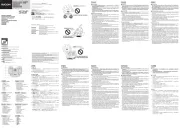
21 Juli 2025
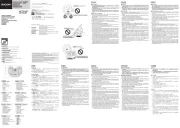
21 Juli 2025
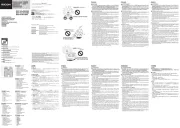
30 Maart 2025

28 Augustus 2023

28 Augustus 2023

28 Augustus 2023

28 Augustus 2023

28 Augustus 2023

28 Augustus 2023

8 Juni 2023
Handleiding Verrekijker
- Dorr
- Eagle Optics
- Levenhuk
- Braun
- Kite Optics
- National Geographic
- Yukon
- NEO Tools
- Tevion
- Barska
- Hawke
- Osprey
- Vanguard
- Leupold
- Rollei
Nieuwste handleidingen voor Verrekijker

22 Juli 2025

22 Juli 2025

21 Juli 2025
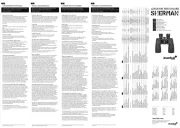
21 Juli 2025
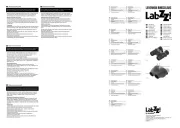
15 Juli 2025
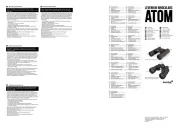
15 Juli 2025
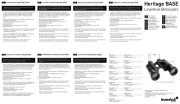
15 Juli 2025
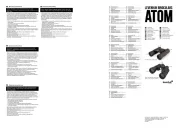
15 Juli 2025
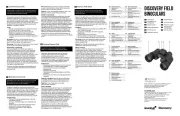
15 Juli 2025
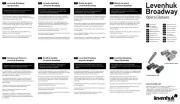
15 Juli 2025